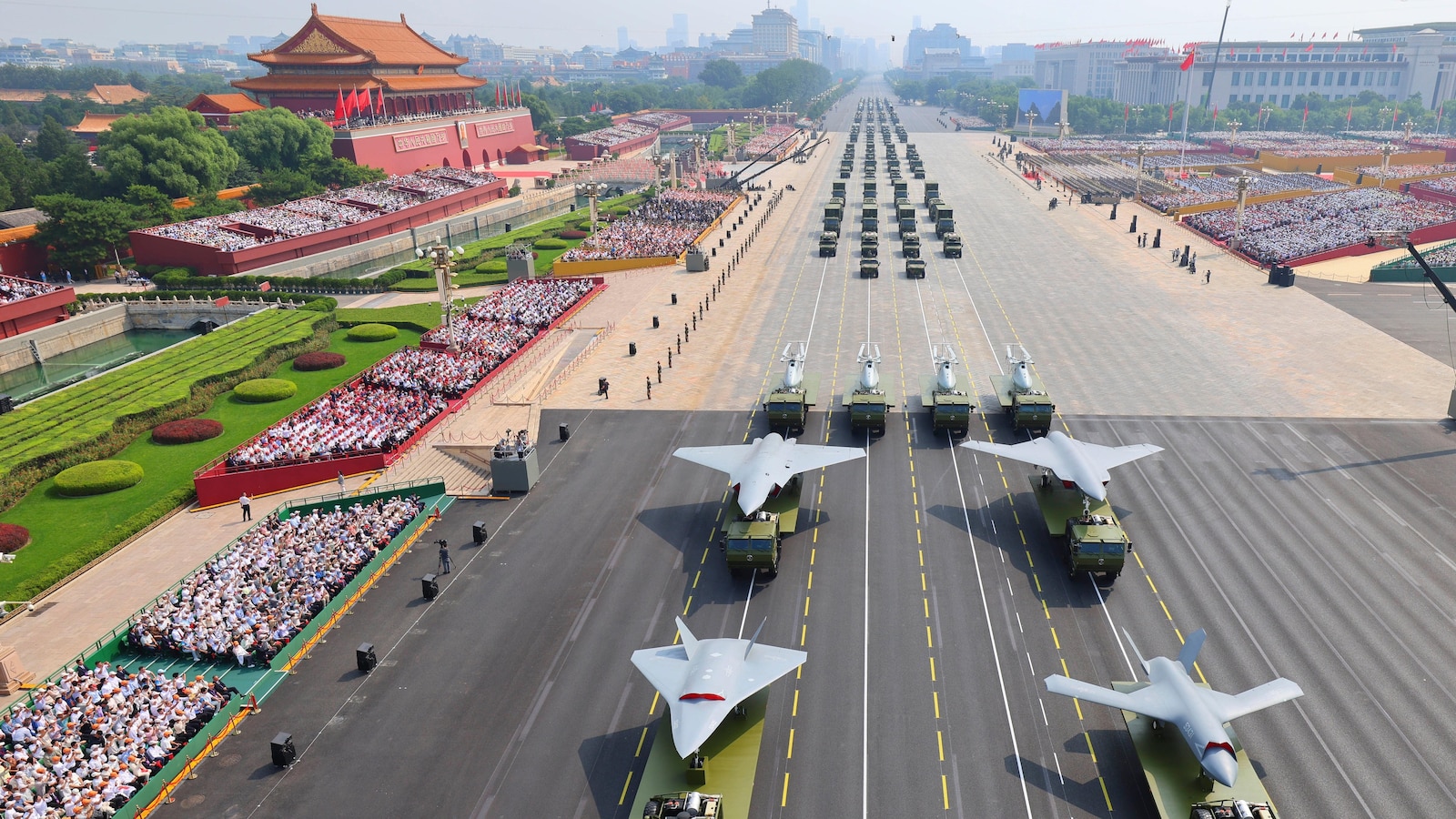China's Beijing Parade Puts New Missiles, Drones on Public Display
Parade marks 80th anniversary of World War II's end as leaders tout expanding nuclear and conventional capabilities
BEIJING — China's leaders on Wednesday presided over a heavily staged military parade that showcased new missiles, drones and other high-tech equipment as the country marked the 80th anniversary of the end of World War II.
Soldiers in pristine uniforms marched in lockstep as President Xi Jinping reviewed the parade. Helicopters flew overhead and briefly formed the numbers 8 and 0 in reference to the anniversary. Beyond the pageantry, the event provided an opportunity to publicly display recent additions to China's arsenal amid a yearslong modernization effort.

Official parade announcers said the equipment on display reflects a program to produce a force “with both nuclear and conventional capabilities able to deter wars in all battle spaces.” The lineup included a range of missiles and unmanned aerial systems that Chinese state media highlighted as recent developments in the country's defense industrial base.
U.S. defense assessments show China's nuclear arsenal remains far smaller than those of the United States and Russia but is expanding rapidly. In its annual report to Congress, the U.S. Department of Defense estimated Beijing now possesses more than 600 warheads and projected the number could exceed 1,000 by 2030. Many of the missiles shown in the parade are the types capable of delivering nuclear or conventional warheads from the air and at sea, analysts said.
Chinese officials have for years pursued a modernization campaign aimed at improving the range, accuracy and survivability of their forces across multiple domains, including land, sea, air, space and cyberspace. The parade offered a public demonstration of that effort and a signal to domestic and international audiences about the scope of recent developments.
The public ceremony drew senior Chinese officials and diplomatic observers, and it followed months of military exercises and procurement programs that have drawn scrutiny from Western governments. The parade's emphasis on advanced weaponry comes amid broader geopolitical tensions in the Indo-Pacific region, where China has sought to expand its military footprint and influence.
State media framed the display as both a commemoration of history and a statement of national strength. Commentators in Beijing emphasized technological progress and the ability to safeguard what they described as China’s sovereignty and security interests.
Western officials have noted the rapid pace of Chinese investment in missile forces, nuclear delivery systems and unmanned technologies, and have warned that such trends will alter strategic balances if sustained. The U.S. Department of Defense and other outside observers continue to monitor China's force development and its implications for global stability.
The parade was one component of a week of official events marking the 80th anniversary, combining ceremonial remembrance with a highly choreographed demonstration of military capability. Chinese leaders said the displays reflected a commitment to modernizing the armed forces and deterring potential threats across multiple theaters of conflict.